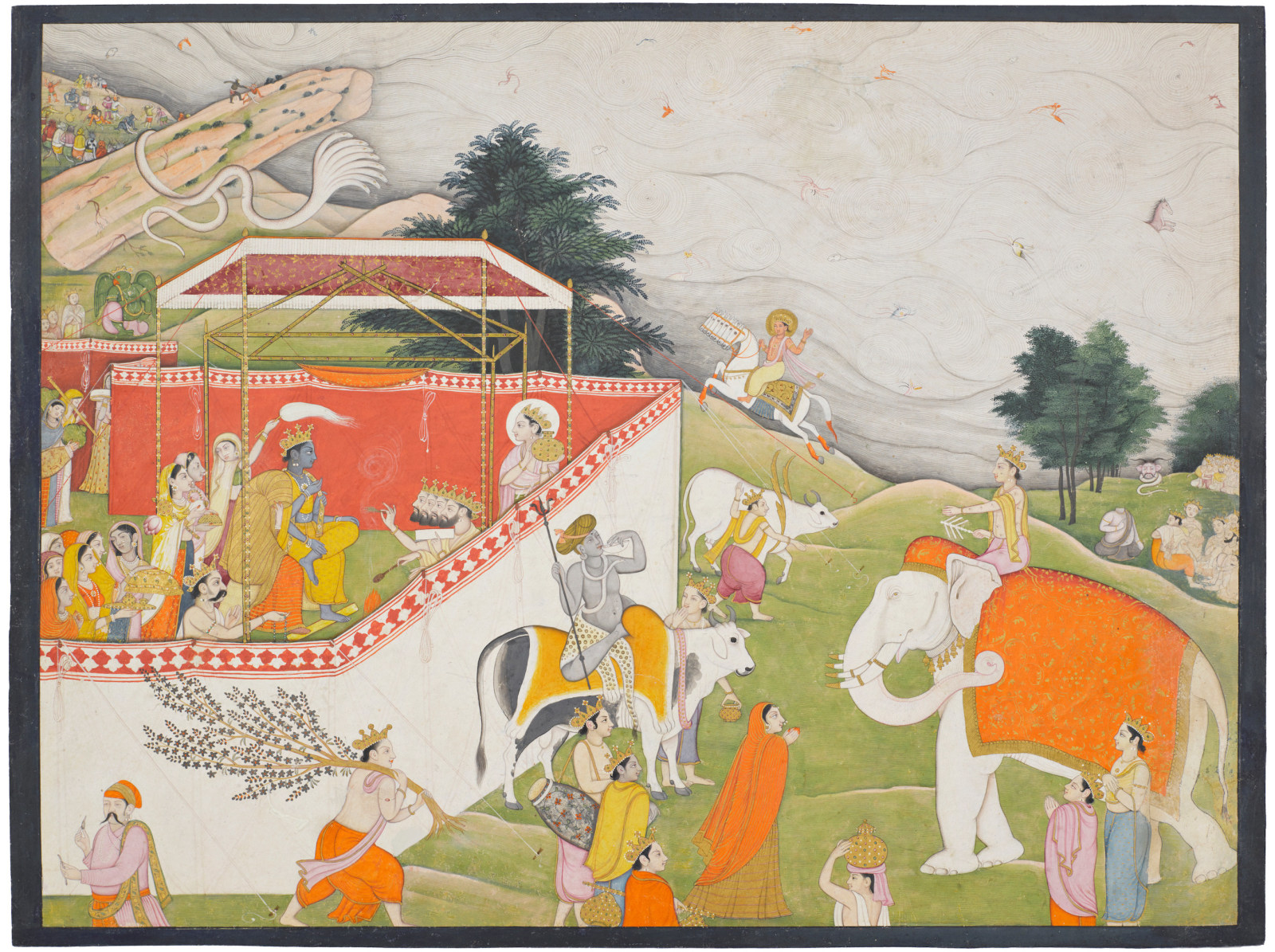
Provenance:
Moti Chandra, Mumbai
Pramod Chandra, Cambridge, Massachusetts, 1964-2014
American Private Collection
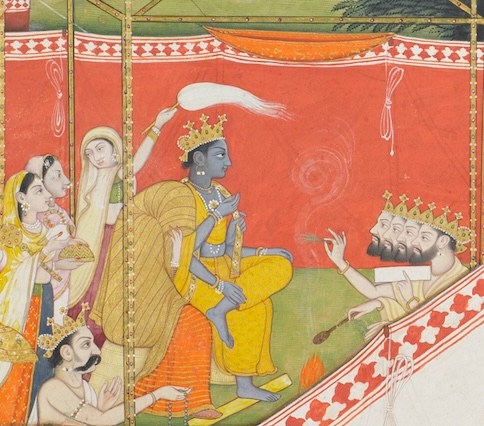
According to the Bhagavata Purana Book VIII, canto 8, vv. 8-22, after Lakshmi, the Goddess of Wealth and Beauty, emerged from the Churning of the Ocean, the gods all vied to get her attention. She looked for shelter from Vishnu and chose the god as her husband. The gods all rejoiced and celebrated the marriage.
The artist has conceived of the marriage ceremony much like a traditional Hindu wedding. Within an enclosure of qanats the couple is seated side by side in a marriage pandal under a canopy. Vishnu is resplendent, and Lakshmi is veiled and lowers her head modestly and has her hand shielding her face. Vishnu holds the end of the cord attached to her veil. Brahma is the officiating priest making the offerings in the sacred fire. The moon god Chandra holds a pot of water. Other goddesses and apsarases attend the couple, bring sweetmeats, and play instruments. Outside the enclosure the other gods are dealing with more wonderful things to emerge from the ocean. Shiva seated nonchalantly on his bull Nandi is imbibing the poison that had spurted from the great snake Vasuki’s many heads, much to the astonishment of one of his attendants.
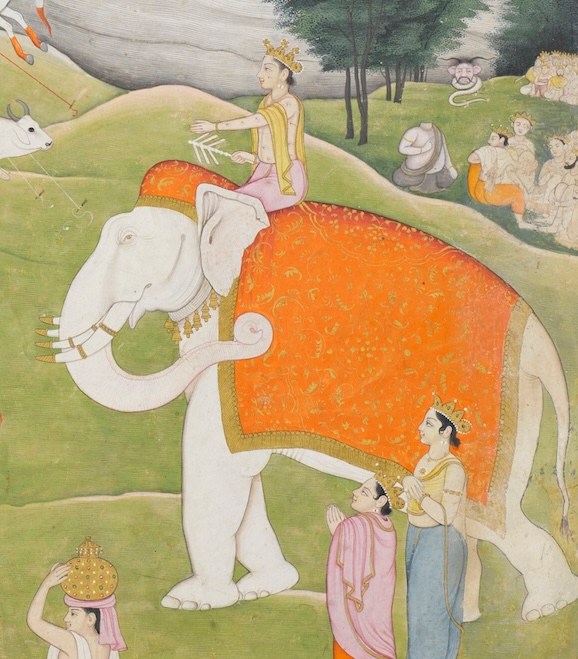
Indra has commandeered for his mount the wonderful four-tusked elephant Airavata and presides over it all like a master of ceremonies. The cow of plenty, Surabhi, has already appeared, as has the Parijata tree, while Surya the sun god has commandeered Ucchaihshravas, the seven-headed horse, and gallops off with him. The Ocean, still with mighty billows resulting from its churning, stretches off out of the picture frame signifying its cosmic dimensions and significance.
While all this is going on, Mount Mandara lies on its side forlornly in the distance, with the disconsolate asuras sitting on the seashore. The churning rope, the great snake Vasuki, is leaving the mountain behind and is heading towards Vishnu. The artist envisages his many heads forming another protective canopy above the divine couple. Eventually the churning is resumed, and the amrita, the nectar of immortality, the object of the whole exercise, emerges.
This painting, although slightly different in size, is related stylistically to a large Bhagavata Purana series (the Modi Bhagavata) that was dispersed in the 1970s. Folios are in a number of collections in India, Europe, and the U.S. The Modi Bhagavata Purana is associated with two other series, a Ramayana and a Gita Govinda, all three of which Archer linked to Raja Sansar Chand of Kangra’s patronage and his marriage in 1781 (Archer, W.G., Indian Paintings from the Punjab Hills, Sotheby Parke Bernet, London and New York, Oxford University Press, Delhi, 1973, pp. 292-93). Other writers treat these series as somewhat earlier and in the Guler style (Goswamy and Fischer 1992, pp. 312-315, and 2011; Losty 2017, pp. 26-31).
All seem to agree on the involvement of the four sons of Nainsukh and two sons of Manaku, who are known collectively in Goswamy and Fischer’s terminology as the First Generation after Nainsukh and Manaku. Building on the artistic legacy of their grandfather Pandit Seu and their fathers, the six younger artists left behind an extensive oeuvre that attests to the family’s consistent artistic vision and uniformly impressive output. Characteristics of all three series are the naturalistic, even if idyllic, treatment of landscape for the first time in Pahari painting and the relatively soft palette.
J.P. Losty
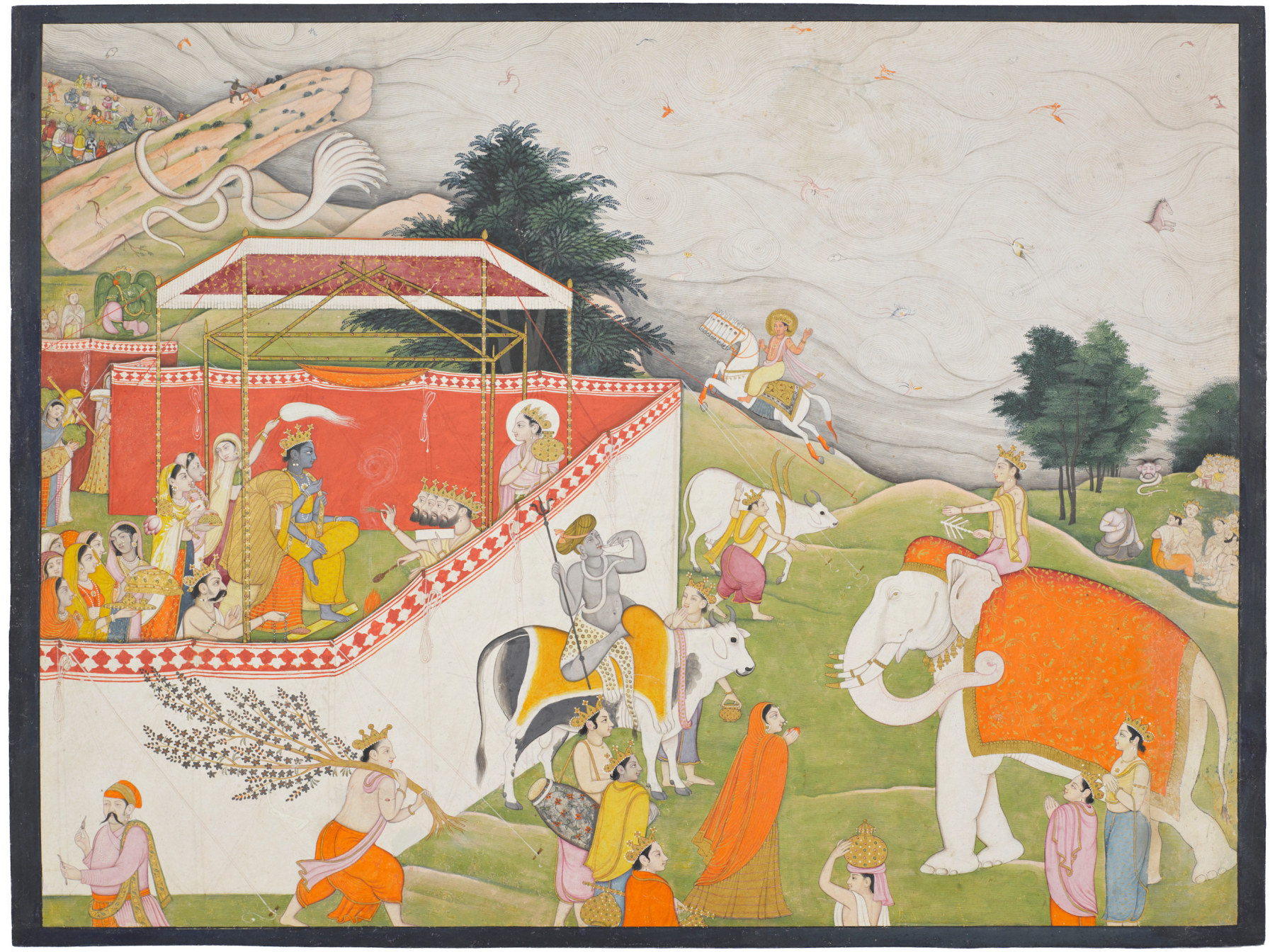
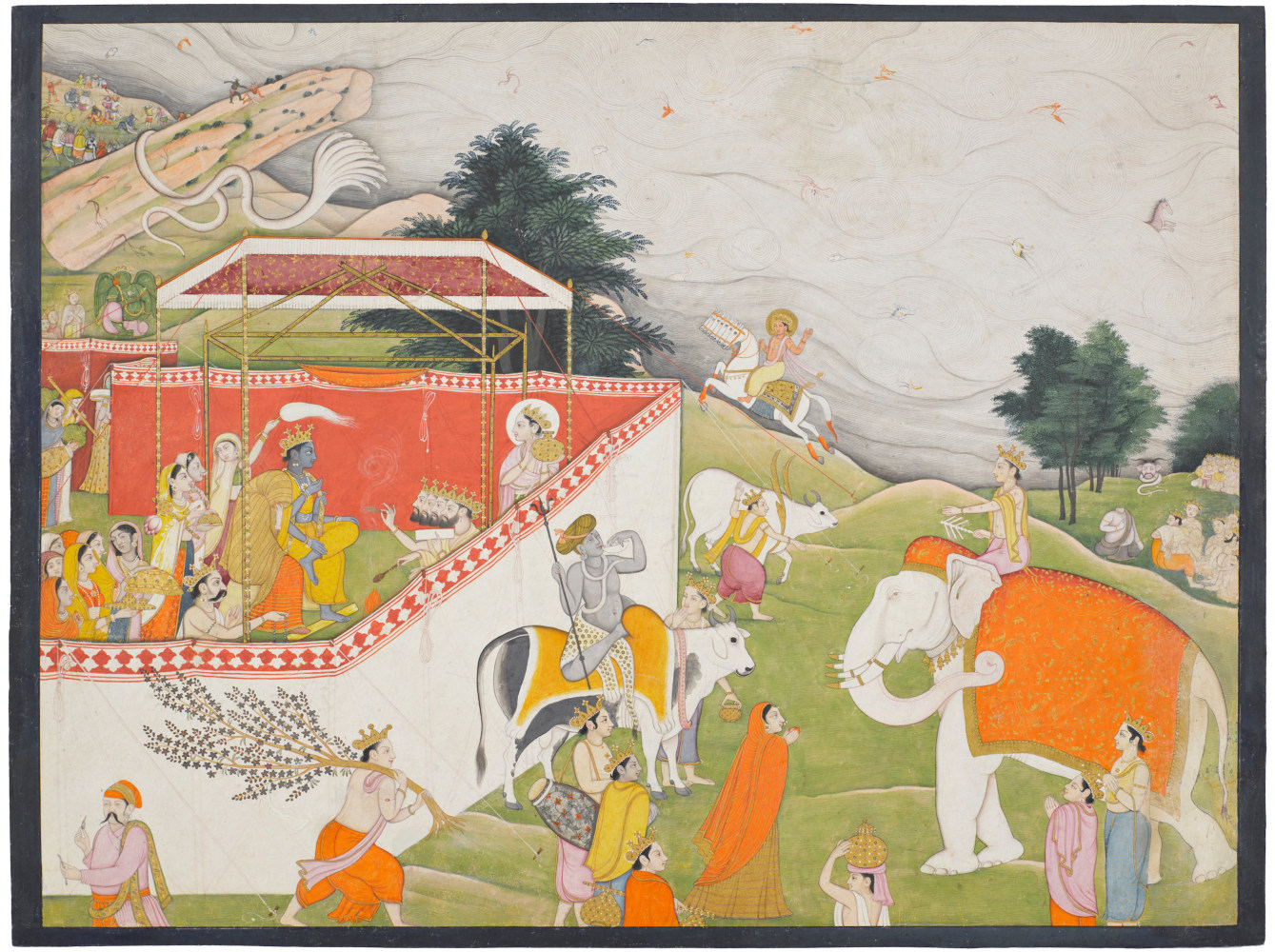
The Wedding of Vishnu and Lakshmi, Page from a Bhagavata Purana Series
Guler
Circa 1770
Opaque pigments and gold on paper
Image: 8¾ by 11¾ in. (22.2 by 29.8 cm.), within a dark blue border; folio: 9 3/16 by 12 5/16 in. (23.3 by 31.2 cm.)
